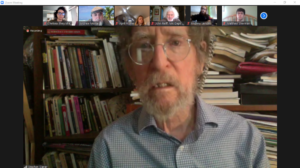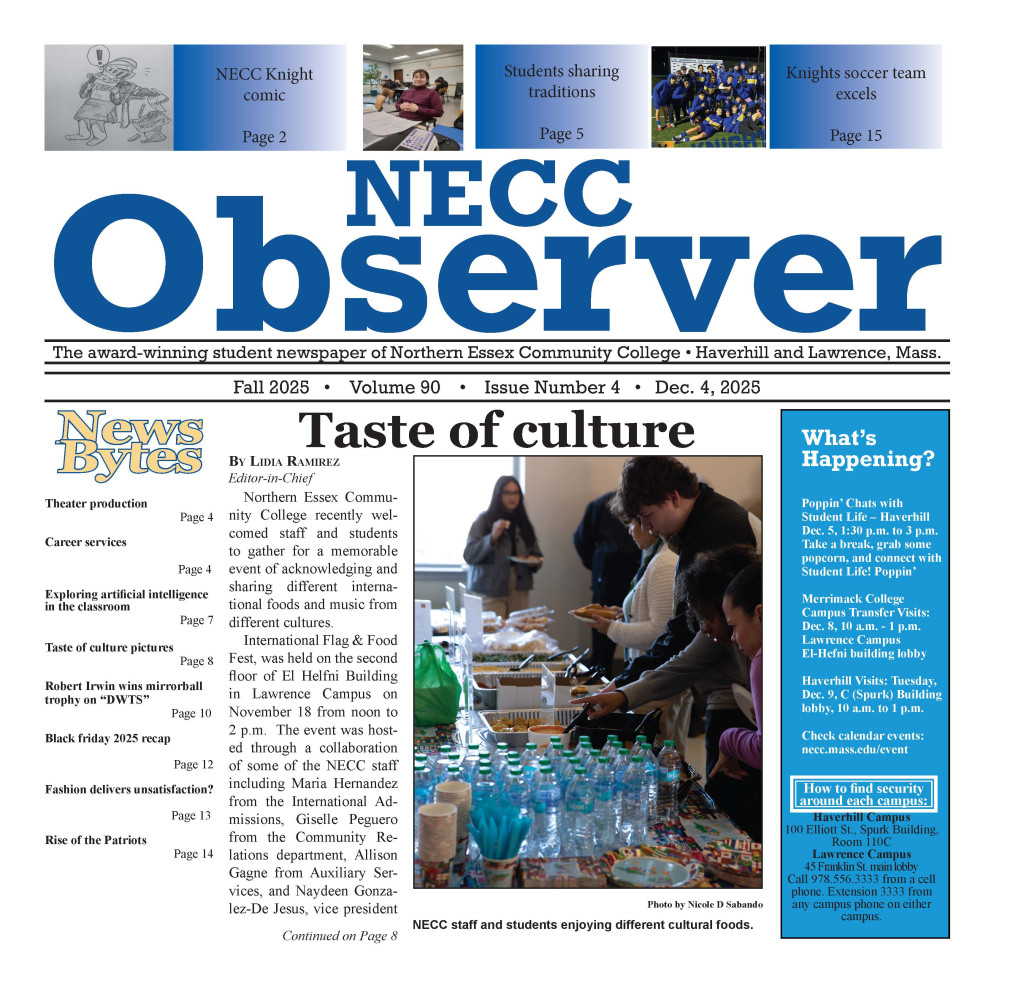“Raise your card… If you have ever witnessed someone in school or work being discriminated against for their race, gender, religion, ethnicity, economic status, or sexuality.”
Each of the nine panelists raises their card in agreement.
On the 27th of March, HCMedia aired the City of Haverhill’s Youth Council’s Diversity Celebration through Facebook, YAC, and Channel 99. Through performances and a panel, this youth-led event captures culture, celebration, and consciousness through local perspectives.
Along with the conversations presented, the event featured inspired pieces of artーranging from poetry and danceーby local artists. I had the privilege to not only hear the panel discussion before the live release, but actually contribute as a guest panelist.
The panel started off with a demonstrative activity in which the participants were asked questions related to their personal experiences, and responded by displaying a card with either “Yes” or “No.” The ten questions explored various situations, from “If you ever felt stereotyped because of a group you belong to,” to “If English isn’t your first language.”
“Everyone’s coming from diverse backgrounds, but we have similar experiences.” Haverhill High School’s NHS President, Nicholas Leung, reflected in an interview after the event. The visualization struck him. And as one of the many youth leaders who have been working on this project since last fall, he feels inspired. “It helped me understand more perspectives rather than my personal experience. It helped relate to others more.”
“How can we reduce cultural misunderstandings and discrimination?”
Ambriel Mayhew, a Haverhill High junior and student activist spoke as one of many youth panelists. “This event really reminded me of my passion.” Last year, Mayhew was one of the three youth leaders that organized the BlackLivesMatter protest in Haverhill. It was her first-ever initiative. “It drives me to incite change.”
As the discussion emphasized, maintaining a platform for voices to be heard and conversations to be shared is vital. Mayhew is continuing to brainstorm plans to bring positive change to the high school. “We have to set up these conversations for generations to comeーfor when the issues change.”
Another youth panelist, Ajmain Zahid, also found the conversation inspiring. “It was my first time and I really enjoyed it. It was a diverse group of people physically as well as mentally. Everyone’s responses were so intellectual and the responses were so thoughtful.” Zahid is the STEM Career Awareness Student Body Coordinator at Haverhill High School. She not only contributed to the panel, but performed a Bollywood-inspired dance with her sister to celebrate their Bangladesh roots. “They were super supporting… Everyone would hype each other up after they answered.”
Zahid also notes how this experience will influence her projects and initiatives down the road. “Being exposed to the different experiences… Will let me better cater to communities I’m not a part of. After everything I heardーI feel like I have a better understanding of what I have to do as an ally.”
I myself realized how much life something like this breathes. A feeling that’s been lacking lately with continued reports of violence and inaction across the nation.
“How can we better teach and emphasize the power/importance of diversity to youth?”
“It’s a breath of fresh air.” Miguel Quinones, the C.O.O. of Quinones Culture Consultants, has dedicated 15 years of work to the Haverhill Area through various organizations including UTEC, Center for Hope and Healing, POSE, and even afterschool middle school clubs. “I often feel that young people are excluded in conversation when it includes movement work… We never really see them as leaders… I want my projects to be youth-led.” Multiple panelists reinforced this notion during the discussion, promoting attention towards young people.
With an extensive background involving working with students, Quinones couldn’t agree more. He reasons how the youth already have to deal with these worries and thoughts at a young age; that the best response is to validate their experiences and help them early, in theme with his prevention-focused youth violence work.
“The conversation around code-switching… We can’t be comfortable in our own skin and we have to appear different in different spaces. We feel we might not be accepted… Are we teaching our young people how to survive or how to be complacent?”
The panel frequently went back to the roots of education.
Zahid summarizes her feelings: “We focus on minority history too much in the context of white supremacy.”
The Chair of the Youth Council, Robin DelNegro, reflects on why the focus of youth voice in this event was so instrumental to its success. “It requires a level of humility… But it’s so powerful. All the time, you see legislation making decisions for groups of people without the input of that group of people.”
DelNegro was impressed by the selection of the panelists and how comfortable and connected everyone soon became. “I was so blown away by how articulate and honest everyone was. They did it in such a way that it was meaningful and credible and impactful.” As one of the organizers, she was esatic for the release, and participated in the live chat along with several other panelists.
“What are your hopes for Haverhill?”
“What pushed us the most was the summer and everything happening with BlackLivesMatter. Even right now with the Asian community. So many minorities have been under attack, and there’s been a drive for education. We wanted to provide that education in the form of a panel… but add celebration as well.”
Gabriela Vargas, a lead organizer and Youth Council member, put her heart and energy into making this event happen. “In reality, we should all celebrate and be proud of who we are.”
Even with all the planning that went into this, the council members were pleasantly surprised by every turn. “It was unusual how open and relaxed we were. How supportive we were. Snapping and clapping. That’s unusual for a panel. It was an open and honest conversation, and it was focused on positivity.” Vargas moderated parts of the discussion along with sharing a poem.
This special panel was not only an environment for sharing experiences and perspectives, but one of new visions and ideas as well.
“Where there are people there is power,” Mayhew says. “We should connect with like-minded people who might also want to be the change in Haverhill.”
“Focus on Celebration and Education,” Leung says.
“It’s an opportunity to hear other people’s voices. And if we can hear them, it opens up our understanding and compassion. And that is a catalyst towards change.” DelNegro says.
“Further elevate our voices,” Zahid says.
“Honestly, just having other people talk about this. Being culturally conscious and willing to understand and educate. Whether you’re a panelist or a viewer.” Vargas says.
“At the end of the day, we all impact each other,” Quinones says. “We need to have these conversations much more. The solutions you want to see are right in front of youーwe’re it!”
“The first step is conversation,” I said during the panel. And everyone can be a part of the conversation.
Here’s one you can join now; To hear more from the Diversity Panel’s conversation, use the link below to view the full event.
Facebook Recording Link:
https://www.facebook.com/hcmediahaverhill/videos/204767540979836


